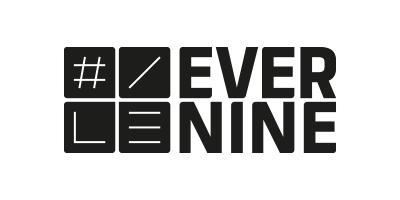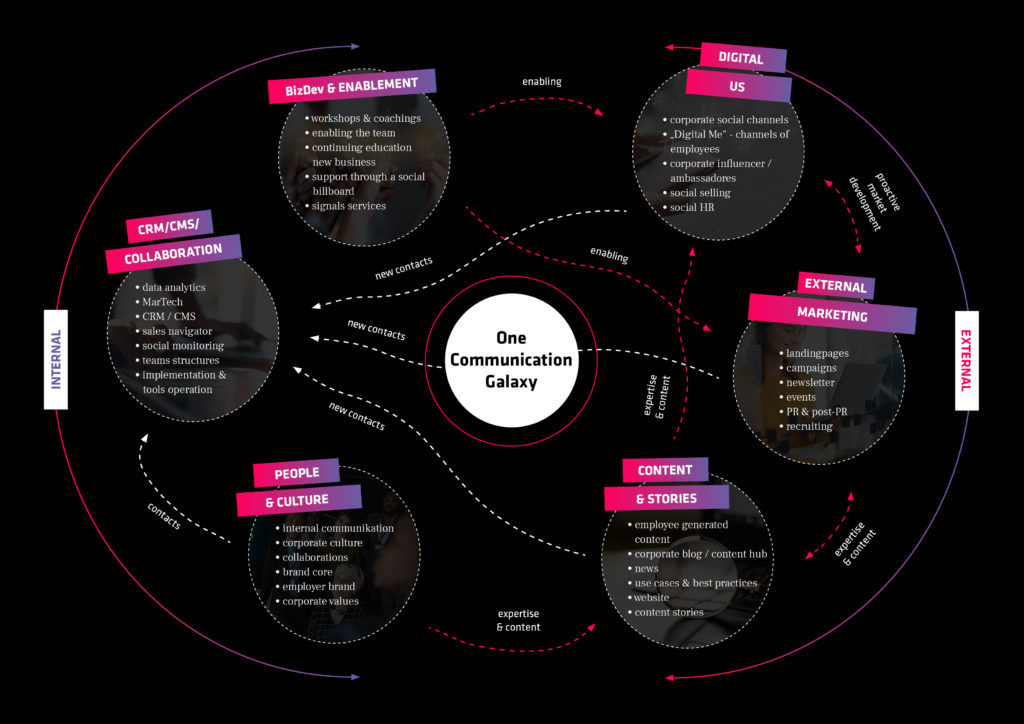
Changing times: Why a redesign in brand building is important now
Marketing managers and CEOs are facing new tasks: It’s not just crises that are influencing business, because companies have been experiencing changes in thought processes for some time now, to which marketing must have an answer. The demand for purpose and sustainability is increasing. Especially in tense situations, investments should be made in brand and communication in order to emerge stronger from crises. This article shows why companies should now focus on a redesign in brand building.
Invest in the brand story
“Companies that don’t invest in their brand will lose their competitiveness”, says Sven Blaukat, Director Strategy at Evernine Group. BVIK (Bundesverband Industrie Kommunikation) also found last year that more than a quarter of B2B marketers worldwide see this as an opportunity to invest more in customer relationships and strengthen trust. In prosperous phases, the willingness to take risks is generally higher to experiment – even “underdogs” get their chance.
However, in uncertain times, not only corporates play it safe, but also SMEs in particular. Only companies that deliver products and services of the required quality in the long term and are best suited to the customer’s environment are considered reliable partners. The challenge is therefore to anchor one’s own brand in people’s minds in such a way that it is perceived as the first choice in purchasing processes.
Brand loyalty is more than a company logo
There was a time when it was enough to carry product/service features with high reach into the target groups. Today, customers expect a consistent and multifactorial communication experience across many areas. According to a recent Kantar study, 74% of consumers are paying more and more attention to sustainability when making purchasing decisions. In crises, trustworthy brands are preferred, which also master good and responsive communication (McKinsey 2021). In order to promote customer identification with companies, other additional factors should be included in addition to high-performance products/services:
- Customer experience: Consistent communication and effective digital processes
- Purpose: Benefit, sustainability, identification with the corporate culture
- Trust: Honesty, transparency, handling of customer data
- Ambassadorship: Employees as multipliers
- Environment: Identification with partners, suppliers
- Dialogue orientation: Tone of voice, back channels
Digital home is no myth
The “digital home” becomes a reality when the brand communicates on all levels, including emotionally, with the Strategic Buyer Groups in all relevant channels and conveys a sense of closeness. In B2C, this can be implemented with POS communication and customer loyalty programmes. In B2B, proximity should be communicated primarily digitally and in a customised manner – presence events and meetings are also becoming more important again. Basically, the real challenges of customers should always be kept in mind. A brand does not appear aloof if competence is always conveyed, regardless of turnover. The easiest way to do this is still through the magic word “storytelling”.
A brand becomes strong when it not only refers to the best features of the product/service, but also repeatedly presents the individual solutions for different needs in a practical way. This also includes continually revealing leadership content without asking for anything in return. This is how companies gradually move up the vendor priority list. In implementation, this often requires a redesign (“refresh”) in brand building.
Employees as a factor of success
When making decisions, more and more attention is paid to the entire environment of providers and partners. Satisfied and communicating employees make the difference in addition to the classic brand ambassadors. This not only has an impact on business opportunities, but also attracts outstanding candidates in recruiting. Millenials, for example, expect many things, but no more perfection. They expect honest answers to their questions, which arise with the respective employer or brand. They are concerned with issues such as transparency, purpose and, increasingly, inclusion.
“In addition to career opportunities, candidates today prefer employers who promote a positive and supportive corporate culture and stand up for values. This must also be reflected in all brand and corporate communications,” says Sven Blaukat, Director Strategy Consulting.
What is the power of a brand?
A brand can achieve a great deal with a purpose concept, even apart from the classic business aspect. This is because a product promise is usually filled with positive messages. If meaningful characteristics such as sustainability, diversity or social aspects are added, brands can even change their environment. This motivates employees and promotes customer identification.
How Evernine supports
Evernine advises companies on an effective redesign in brand building with a holistic approach. In addition to in-depth digital health checks, the entire communication structure is examined and any weaknesses are uncovered. In addition to reputation and tone of voice, areas such as competition, sales (CRM), customer experience, marketing (martech), PR and HR are closely examined and possible solutions are identified. For this purpose, Evernine offers low-threshold approaches to strengthen the brand in its entirety. In concrete terms, this can be operationalized via a redesign process that brings the tried and tested into line with new market expectations.
If you’d like to learn more about campaigns or refreshing your brand building with Evernine, feel free to download our Quick Guide or reach out to our experts directly.
Source cover: AdobeStock / Rawpixel.com




